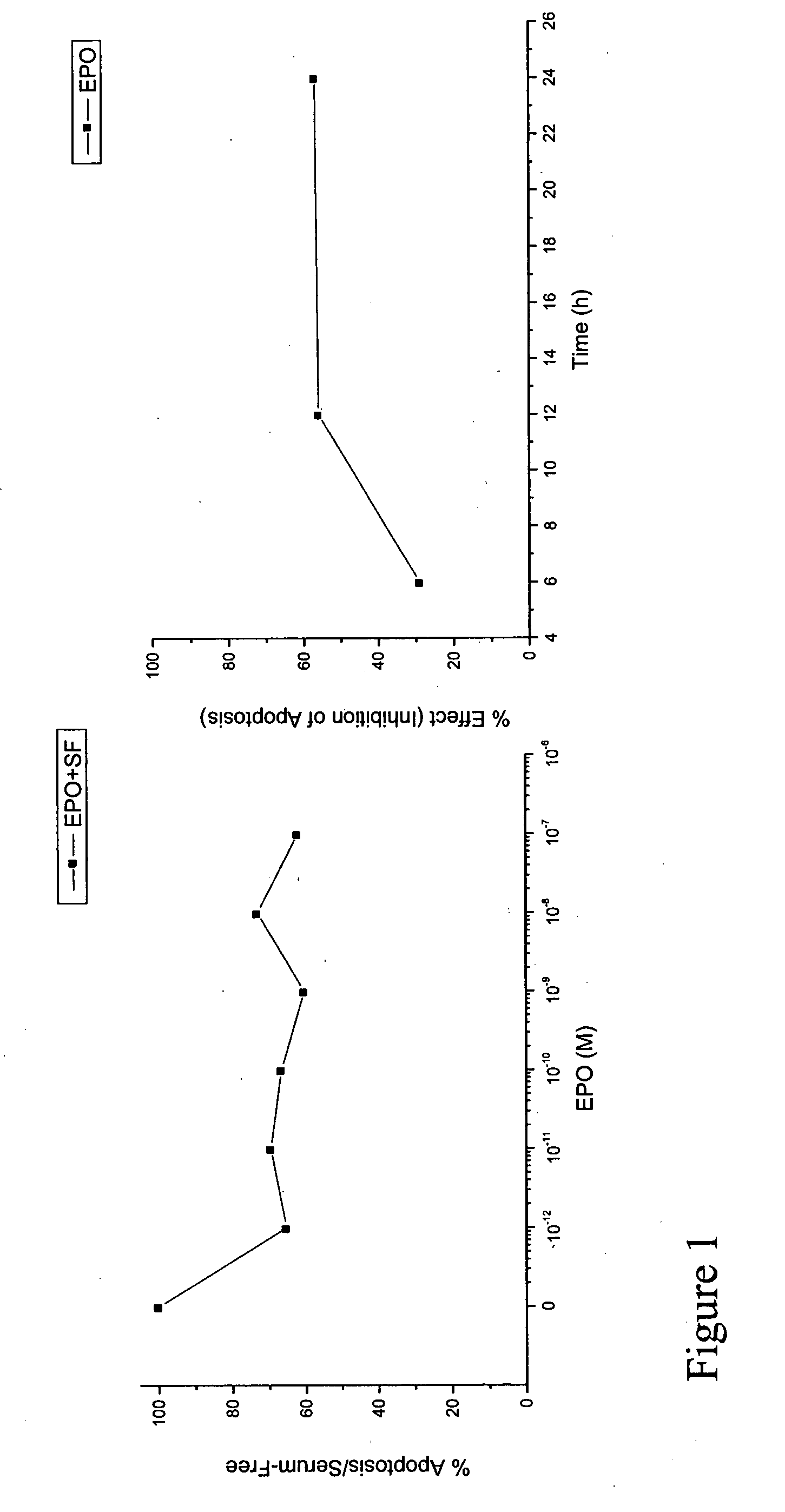Potentiation of erythropoietin (EPO) action by membrane steroid receptor agonists
a technology erythropoietin, which is applied in the field of membrane steroid receptor agonists, can solve the problems of unable to meet the sequence, the nature of these membrane steroid sites remains unclear, and the difficulty of maintaining stable blood levels of erythroid cells
- Summary
- Abstract
- Description
- Claims
- Application Information
AI Technical Summary
Benefits of technology
Problems solved by technology
Method used
Image
Examples
example 1
[0072]Human epithelial cells (for the present examples the human breast epithelial cell line T47D has been used, expressing both estrogen and progesterone intracellular, estrogen and androgen membrane and EPO receptors, see Arcasoy M O, et al Biochem Biophys Res Commun 2003; 307:999-1007; Kampa M, et al Exp Cell Res 2005; 307:41-51) were cultured in serum-supplemented culture medium. Then they were washed, transferred into a serum-free medium, supplemented with the indicated concentrations of EPO (ranging from 10−12 to 10−7M). Six, twelve and 24 hours later, apoptosis was assayed by the ApoPercentage assay (Biocolor Ltd., Belfast, N. Ireland), detecting initial damage of the plasma membrane of early apoptotic cells. Serum deprivation of cells, through omission of growth factors and / or nutrients, is a major pro-apoptotic challenge. Indeed, as early as 6 hours thereafter, cells enter into apoptosis. However, EPO can partially reverse this apoptotic phenomenon. FIG. 1 presents the dose...
example 2
[0073]Human epithelial T47D cells were cultured in the presence of serum. Then they were transferred into a serum-free medium, supplemented with the indicated concentrations of estradiol-BSA conjugate (Sigma-Hellas, Athens, Greece). Apoptosis, measured as indicated in Example 1, was measured after 6, 12 and 24 hours. As shown in FIG. 2, E2-BSA partially reverses serum-deprived-induced apoptosis, in a time- and dose-dependent manner.
example 3
[0074]Human epithelial T47D cells were cultured, transferred into serum-free medium, supplemented with EPO (10−7M) and E2-BSA (10−7M). Six, twelve and 24 hours later, apoptosis was assayed, as described in Example 1. In 6 and 12 hours, the effect of the combination of the agents was equal to each one of them, administered alone. Surprisingly, 24 hours later, an additive effect of E2-BSA and EPO is observed, suggesting a physical or functional interaction of the agents. This interaction may occur at the receptor level (i.e. at the plasma membrane level) or by modifying post-receptor intracellular signaling cascades, leading ultimately to anti-apoptosis. FIG. 3 presents this surprising additive action of E2-BSA and EPO.
PUM
| Property | Measurement | Unit |
|---|---|---|
| incubation time | aaaaa | aaaaa |
| incubation time | aaaaa | aaaaa |
| lipophilic | aaaaa | aaaaa |
Abstract
Description
Claims
Application Information
 Login to View More
Login to View More - R&D
- Intellectual Property
- Life Sciences
- Materials
- Tech Scout
- Unparalleled Data Quality
- Higher Quality Content
- 60% Fewer Hallucinations
Browse by: Latest US Patents, China's latest patents, Technical Efficacy Thesaurus, Application Domain, Technology Topic, Popular Technical Reports.
© 2025 PatSnap. All rights reserved.Legal|Privacy policy|Modern Slavery Act Transparency Statement|Sitemap|About US| Contact US: help@patsnap.com



